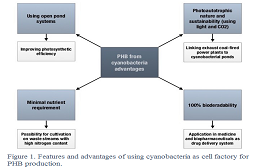
Maximilian Lackner
Lackner Ventures & Consulting GmbH, Austria
Title: Sustainable PHB production from CO2 and sunlight using cyanobacteria
Biography
Biography: Maximilian Lackner
Abstract
The use of conventional plastics has become a huge environmental concern. is a growing concern, leading to resource depletion and littering (e.g. microplastics pollution of the sea). Polyhydroxybutyrate (PHB) is formed as energy storage compound by several microorganisms. It has thermoplastic properties and can be a replacement for PP. PHB is fully degradable, also in the marine environment. Today, PHB is synthesized by heterotrophic bacteria using sugar fermentation. The relatively high costs of raw materials and continuous oxygen supply for the processing make PHAs expensive in comparison to other petroleum-derived plastics. Methodology and theory: The alternative is to use certain oxygenic cyanobacteria as cell factory. Cyanobacteria can store PHB under nutrient (P, N) limitation from renewable and sustainable resources sunlight and CO2 and due to their minimal nutrient requirement are the most promising host system for PHB production. However the growth rate and the PHB yield stay low. There exists no general method to increase PHB yield in cyanobacteria. This work aims at making cyanobacteria competitive by optimization of growth conditions and by strain selection. Findings: We screen for wild type strains which can naturally accumulate PHB. During our systematic screening we have discovered a cyanobacterium sp. strain which naturally accumulates a high PHB content under N and P limitations in comparison to other existing strains. The improvement of the strain is possible using process engineering and natural mutations. Significance: Our project can develop an economically superior bioprocess to enhance biomass growth and PHB productivity and prove feasibility to use CO2 for production of biodegradable plastics.

References:
M. Lackner, Bioplastics – in: Kirk Othmer’s Encyclopaedia of Industrial Chemistry, (2015). - http://dx.doi.org/10.1002/0471238961.koe00006

